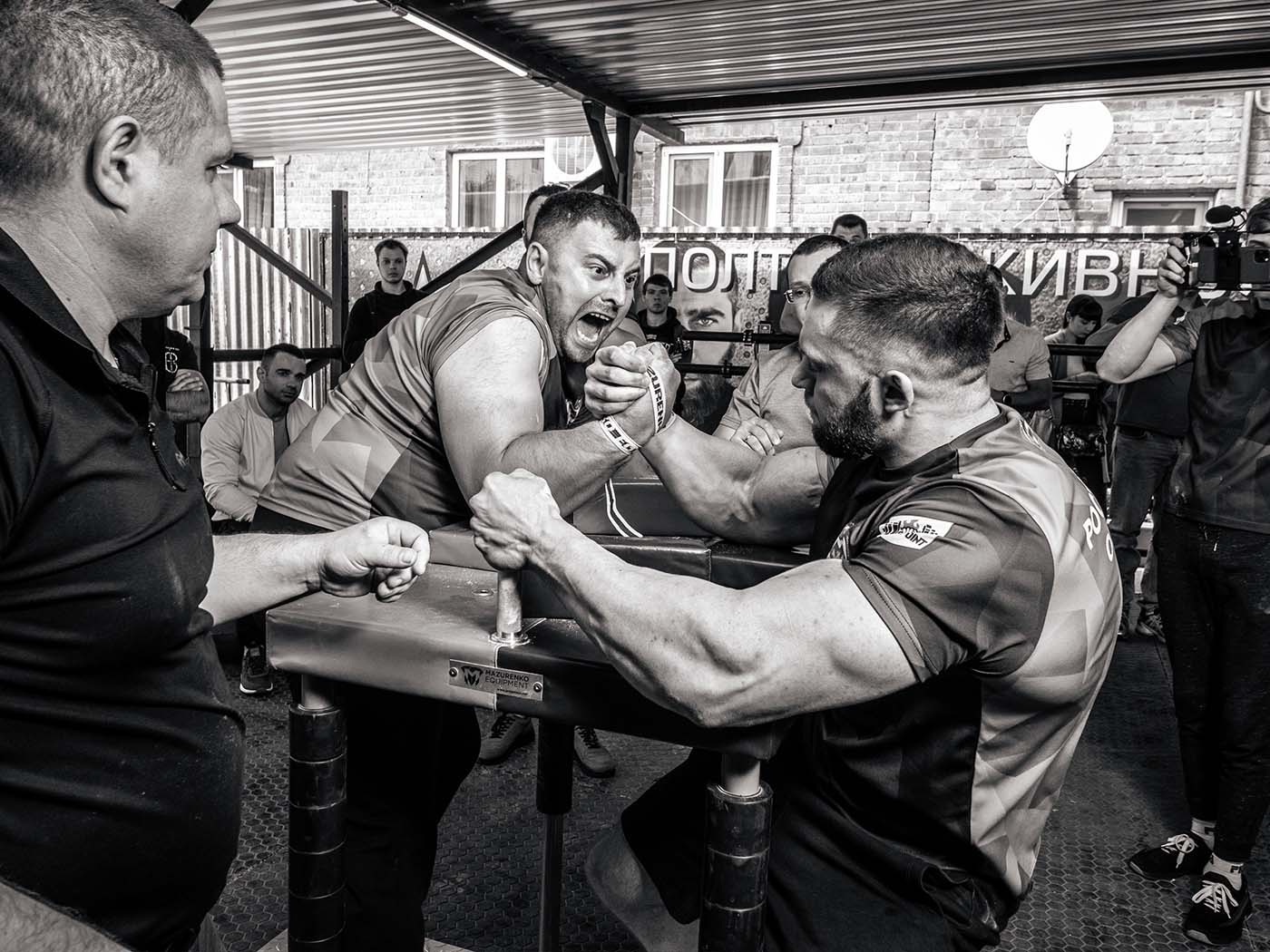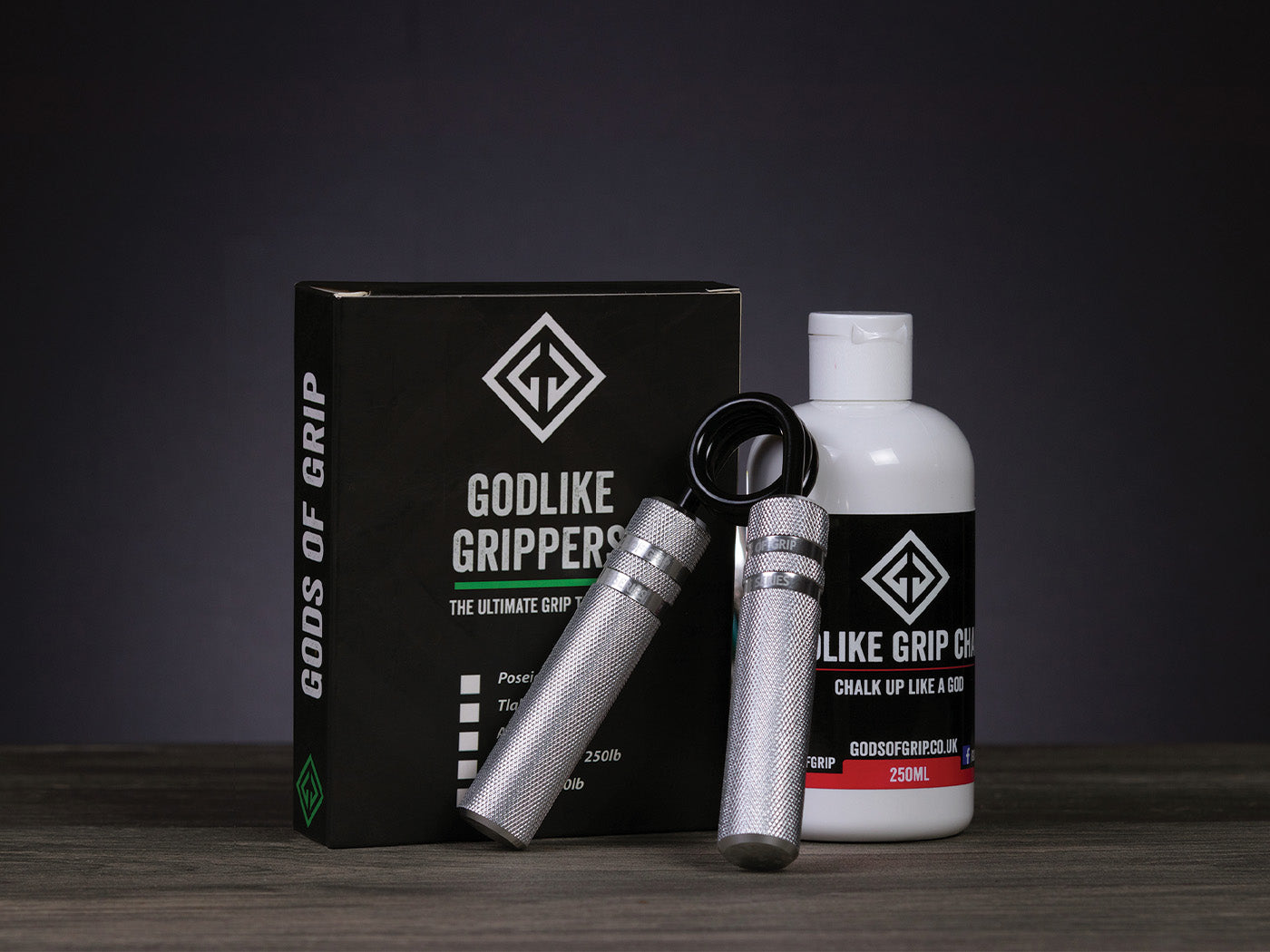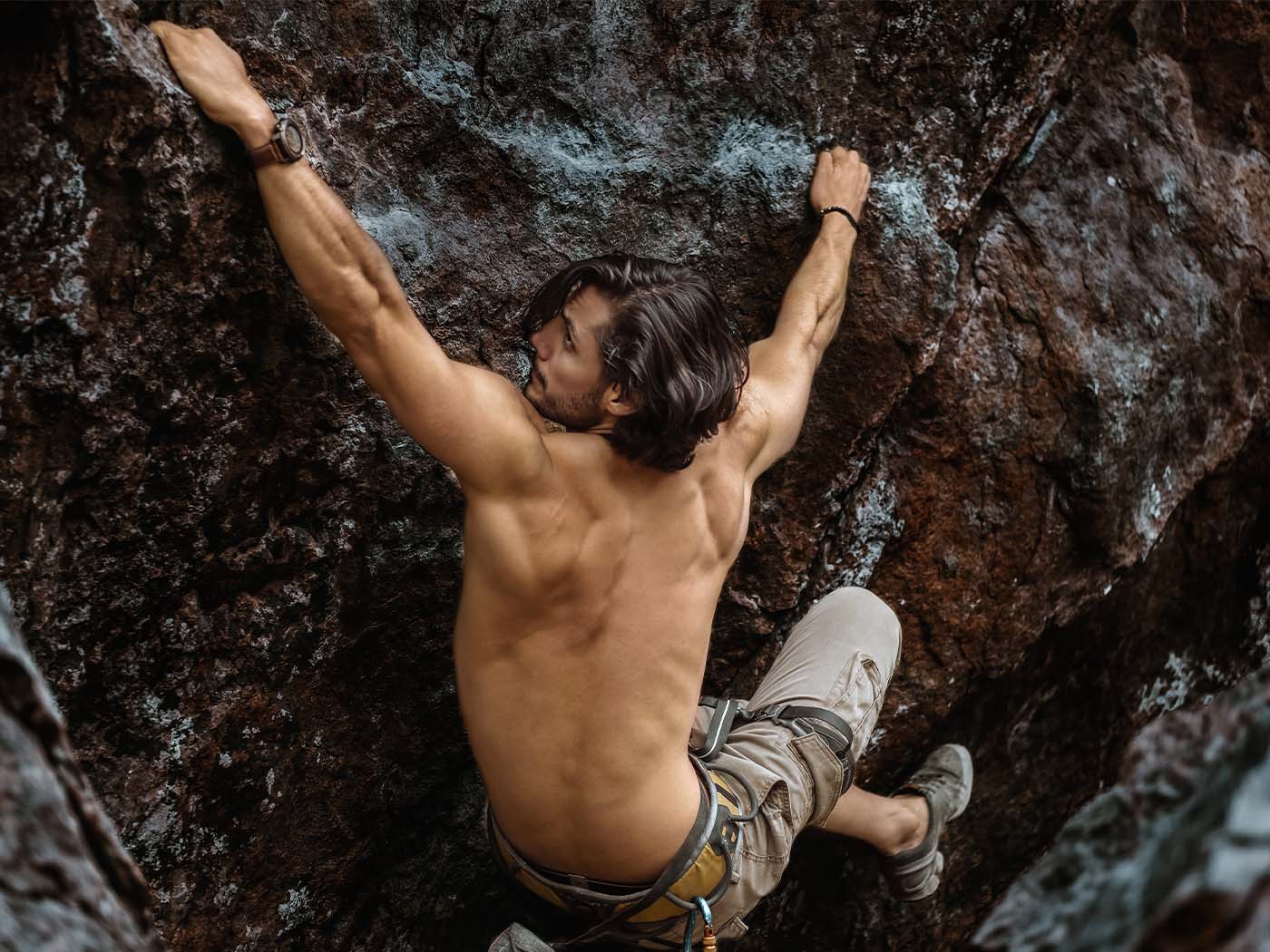Arm wrestling is a great sport we have been learning a great deal about over the past year or so. Most people look at arm wrestling as simply, whoever the biggest guy is will win.. This is far from the truth, arm wrestling is a complex, very technical sport. Requiring years of training and learning different techniques whilst perfecting positioning. To be successful in arm wrestling you need a combination of arm strength and technique.

There are many different moves and styles that are utilized during arm wrestling. Learning each of these moves is a great way to take down your opponent.
The three main arm wrestling moves and styles, which we will look into below. The styles include side pressure, back pressure and upwards pressure (posting).
Arm Wrestling Styles
Side pressure mainly involves upper body strength, especially the pectorals to help generate force against your opponent. This pressure is forced perpendicular to the plane of the palm. This move is more generally used by novices trying to pin their opponent by moving their hands towards the pad.

Back pressure heavily relies on back strength, specifically the lats. This is to help adduct the upper arm and generate huge force, pushing yourself away from the opponent. To be successful with this technique, you need to use your back strength to increase the elbow angle of your opponent, this will limit their leverage and ability to apply pressure or force effectively.
Upwards pressure, otherwise known as Posting involves contraction of the bicep in order to flex the elbow. To be successful at this movement, the aim is to decrease the elbow angle of your opponent, this will help increase your leverage against them and decrease the amount of force they can put against you.
Arm Wrestling Moves
Hook - Classified within the inside style of arm wrestling, the hook is a supination of the hand and forearm, this heavily relies on wrist strength. Often resulting in a match centered on pressure applied through the wrist.Generally a strong hook is successful if you are particularly strong, relying more on raw arm strength in the bicep specifically.
Toproll - The classic characteristics of a strong toproll rely on pronation of the hand and forearm. The toproll is generally classified within the outside style of arm wrestling. A match will usually be centered around the amount of pressure applied through the fingers. To be successful at the toproll you need high levels of strength in the hand and forearm.
Press - Probably the least popular of the three, The press relies more on tricep and shoulder strength, commonly referred to as shoulder rolling. You must position yourself in a specific way that allows you to rotate your torso into a position that means you can position your shoulder behind your hand. Once in position you are able to better utilize tricep strength, leaning in using your body weight. This move is usually only attempted in neutral or advantageous positions to try and finish an opponent.
Power Of The Wrist
There are a lot of movements within grip training that will directly aid your arm wrestling strength. One of the key similarities is wrist strength. Building a strong wrist for both arm wrestling and grip specific training is huge. If you're working your wrist, you’re on the right track.

Using wrist strength allows you to get into more efficient positions, tiring out your opponent and allowing you to perform pinning maneuvers. In the world of arm wrestling this is better known as cupping.
Cupping is the flexing of the wrist by the forearm muscles that bends back the opponent's wrist, and dramatically decreases their accessible leverage during the match.
Training For Arm Wrestling
Coming from a gripsters perspective, some of the best tools for starting arm wrestling training are rolling handles, resistance bands and thick grip curl bars.
These pieces of equipment will allow you to effectively train your wrists and forearms whilst the resistance bands provide time under tension.
Wrist Curls
The major key to developing wrist and forearm strength is by performing a variety of wrist curls. Wrist curls are the number one exercise for arm wrestlers. We will look into a few different variations below.
Banded Wrist Curls
An effective movement for warming up before moving onto heavier curls. Using a lighter resistance band to start allows you to get the blood flowing.
The constant pressure from the band allows for a greater time under tension and will really help develop a strong support grip and foundational wrist strength for you to build upon.
Focusing more on the wrist, squeezing in the forearm, you should feel a really nice stretch and continued burn when performing these.
- Start off using a low tension band
- Stand / Hook it onto the floor
- Grab the band in your hand - Thumb upwards
- Slowly curl your wrist upwards with a slight hold
- Release the wrist back down
- Curl slowly back up to the top
Arm Wrestling Champion
Alright so who is the arm wrestling champion? Well.. It gets a little bit complicated here, technically there are multiple champions. This is purely down to the different federations of arm wrestling. Let’s take a look at some of the real big names in arm wrestling.
John Brzenk
Widely regarded as one of if not the greatest arm wrestlers in the sport, ever. John Brzenk is a professional arm wrestler from the USA. Officially named in the Guinness Book of World Records as the “Greatest arm wrestler of all time” It’s a pretty big accolade.

Starting out on the arm wrestling journey early, John began taking on his fellow students across tables for around 5 years. When he was in eighth grade, he broke his arm whilst taking on his father's friend. Since then John has stated this breakage significantly increased his tendon strength allowing him to develop immense levels of strength and power.
His professional career started in 1982 at the age of just 18. Since then, John has only lost a single supermatch and only a few people have ever beaten him in tournaments. To be fair to John, most of these losses came at the latter stages of his career (now 57). Winning championships in a number of different weight classes including four world championships in the heavyweight division, and the middleweight world championship.
John Brzenk Stats
- Height - 6’1”
- Competition weight - 195 / 225lb
- Biceps - 18.25”
- Forearms - R 16.5” L 13.5”
Devon Larratt
Ok so, I may be a little biased here. But I’m a huge fan of Devon. His worth ethic, style and personality make him not only an exceptional arm wrestler but a great showman too.

Devon, a professional arm wrestler, became interested in the sport throughout high school. Furthermore, at the age of 21, he began to compete against other Canadian arm-wrestling powerhouses.
In addition, due to a medical condition, he was forced to withdraw from competition in 2013. Devon had to have surgery to repair his elbow and right arm.
It was said that it limited his ability to compete and impacted the functioning of his hand.
Many people are unaware that, in addition to being an arm wrestler, Larratt is also a former military guy.

Devon trained and competed against other troops during his time in the service. Arm wrestling was a popular pastime on military posts. As a result, it aided Devon's exponential growth. Devon served in the Canadian Special Forces and was shot while in Afghanistan.
Devon became famous in late 2000 after quitting the Special Forces and focusing completely on arm-wrestling.
Devon has competed in various events and won matches all across the world. It's worth noting that Larratt won these championships despite recuperating from surgery.
He is also known for successfully defending his WAL championship in both arms. Furthermore, in 2018, Larratt defeated Jerry Cadorette in a super match at WAL 402.
Devon Larratt Stats
Height - 6’5”
Competition Weight - 275 - 293lb
Biceps - 17.25”
Forearms - 14.9”
Training For Arm Wrestling
There are a variety of exercises that will specifically develop your arm wrestling strength. Let's check out a few of Devon's favourite arm wrestling training moves.
Cupping/Wrist Flexion
1 set, 25 to 50 reps
Cupping, or wrist flexion, is referred to by Larratt as "the Ace of Spades, [the] most crucial movement" in arm wrestling. So, what precisely is it?
"It's basically bending your wrist inwards, so if you have that much flexibility, your fingers might be able to touch the inside of your wrist," he adds. "However, the strength must extend all the way to the fingers."
All you have to do is bend your hand inward and flex while trying to contact your wrist with your fingers.
According to Larratt, the important exercise resembles the hook method in arm wrestling, which is the wrist-bending movement that allows a contender to open up his opponent's bicep sufficiently to leverage the pin. Larratt recommends aiming for up to 50 reps of cupping in a single session.
When you're comfortable and confident with your wrist flexion, go to your neighborhood hardware store to increase the difficulty of this exercise. To minimize sliding, Larratt recommends grabbing a three-inch PVC pipe and covering it with sand paper. Now, wrap a belt twice around the pipe, leaving just enough slack to make an outer handle through which you may slip your hand. With your free hand, wrap a nylon strap around that hand. Then, cup with one hand while tugging in the opposite way with the other to produce resistance. According to Larratt, this is the closest thing to simulating the pressure in arm wrestling without really climbing on the table and participating.
Standing Cable Wrist Curls
1 set, 25 to 50 reps
If you follow Larratt's easy modification, you may use the same cable machine you've used for all sorts of workouts at the gym to blast your forearms as well. "I'll face the cable machine and set up like I'm on an arm-wrestling table, clutching the spinning handles, and simply execute arm-wrestling wrist curls." Tilt, curl, and twist the handles slowly to truly work those forearms.
Pronation Forearm Flex
1 set, 25 to 50 reps
Sit with your arm outstretched and palm up. Then, Larratt instructs you to put a belt around your hand, with the option of attaching a 10-pound plate at the end. Twist your hand counterclockwise while raising the weight until you feel your pronator teres muscle contract.
Regularly performing this exercise, according to Larratt, will help create the "resistance" needed to imitate arm wrestling's top roll technique, in which a contestant sinks his hips beneath the table and pronates his wrist to produce enough leverage to pin his opponent.
Arm Wrestling Equipment
We recently added some awesome arm wrestling equipment from Arm Sport Israel.
WRISTMAX - WRIST & FINGER TRAINER
The WristMax Arm Wrestling handle is great for developing your hand and wrist muscles, ligaments, and tendons.
These are required for victory in arm wrestling competitions and events. It uses the principles of eccentric training to enhance your hand and wrist strength, power, and speed, as well as your ability to change direction quickly and effectively. By strengthening your tendons, you lower your chances of injury during training and competitions.
WristMax is the most effective handle for exercising the wrist and fingers particularly.
It is designed ergonomically to fit the athlete's grip and keep them comfortable while exercising. It easily attaches to cable equipment and is the ideal item for your gym bag or table practice.
CONE PULLER - HOOK TRAINER
A strong hook on its own or a fantastic top-roll can help you win an arm wrestling match in the first few seconds. Unfortunately, using standard gym equipment to fine-tune your hook technique is challenging.
The Arm Sport arm wrestling handles attach to weight machines, cable machines, and loading pins to offer the resistance you need to swiftly build hand, wrist, and forearm strength and power. The cone puller has a cone-shaped hook training handle that is particularly intended to target the muscles, tendons, and ligaments necessary to successfully perform an unbeatable hook technique.
WRISTBALL WRIST TRAINER
As part of our growing collection of Arm Wrestling. We've collaborated with Arm Sport to bring you some of the top wrist and forearm developers on the market.
WristBall is ideal for improving wrist strength, mobility, and dexterity. You may execute a variety of wrist curls to help increase wrist strength by easily attaching to any cable machine or loading pin.
FOREARM HAMMER LEVER
The forearm hammer lever is a great tool for building wrist and forearm strength.
A strong wrist is essential for a firm grasp. It doesn't matter if you're steel bending, arm wrestling, stone lifting, or playing tennis. A strong wrist is required.
The forearm hammer lever is ideal for increasing wrist strength and forearm muscularity. Use it without any weight or add weight to the end for an added challenge.
Back and forth movements are the most popular technique to utilise the forearm hammer lever.
Simply move your wrist to lever the hammer from vertical to horizontal. This is the most efficient approach to strengthen your wrists. Doing this a few times each week can quickly improve your wrist strength.
Resistance Bands
Resistance bands are a very adaptable training tool. Ideal for use on the go, at the gym, or even at home.
Ideal for strength, hypertrophy, endurance, and recovery training. Each pair of four resistance bands includes a convenient travel pouch.
We enjoy utilizing resistance bands to add complexity to our grip tool lifts. They are excellent for increasing your duration under stress, as well as strengthening your focus and support grip.
There are four bands to pick from, each with its own set of advantages.
Red - The red resistance band has a diameter of 0.5" and produces resistance ranging from 7 to 16kg. Perfect for warming up, cooling down, or recuperating from an injury.
Black - With a diameter of 0.9", the black resistance band provides a noticeably harsher stretch than the red and may be utilised for a wonderful exercise. With resistance ranging from 11 to 30kg, it's great for all-around exercise.
Purple - The purple band has a diameter of 1.3" and is our second highest resistance band. The purple band has a resistance range of 16-39kg, making it ideal for strength training and aided stretching.
Green - Our hardest resistance band right now, offering a hefty 25-57kg of resistance. At first appearance, the 1.7" diameter is somewhat daunting. Ideal for adding weight to your workouts or for aided pull ups.









